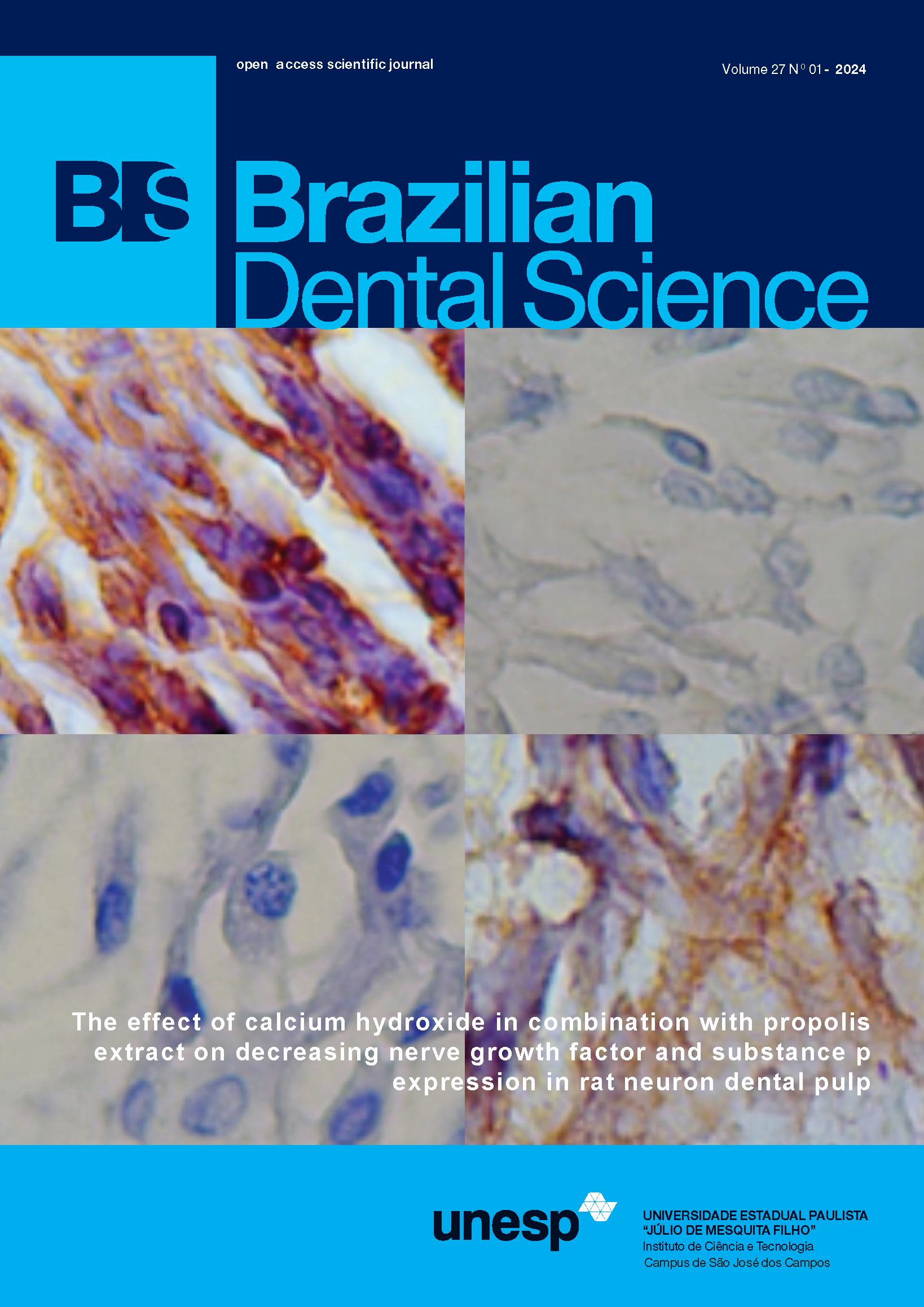Odontogenic maxillary sinusitis associated with foreign body displacement after tooth extraction: report of an unusual case
DOI:
https://doi.org/10.4322/bds.2024.e4054Abstract
Background: Odontogenic maxillary sinusitis caused by a foreign body presents diagnostic and therapeutic challenges due to its infrequent occurrence and unique characteristics compared to sinusitis originating from other sources. Case Report: Illustrating such fact, this report presents the clinical case of a 37-year-old woman referred complaining of pain in the same region where she had extracted her upper right first molar five days before. The intraoral examination revealed the presence of an orifice in the region, suggesting oroantral communication. Imaging exams revealed opacification of the right maxillary sinus and the unexpected presence of a highly radiodense object. With the diagnosis of maxillary sinusitis due to a foreign body established, the surgical approach initially consisted of administering preoperative medication, preceded by access to the maxillary antrum using the Caldwell-Luc technique. The object was found and removed, consisting of a surgical drill. At follow-up there was complete absence of symptoms and complete closure of communication. Conclusion: Cases of odontogenic maxillary sinusitis caused by drill detachment after tooth extraction are fairly uncommon. A thorough clinical evaluation proved to be essential and the Caldwell-Luc access was effective, safe and with good postoperative results, even with the absence of standardized diagnostic and management methods.
KEYWORDS
Foreign body; Maxillary sinusitis; Oral surgery; Oroantral fistula; Retained surgical instrument.
Downloads
Published
How to Cite
Issue
Section
License
Brazilian Dental Science uses the Creative Commons (CC-BY 4.0) license, thus preserving the integrity of articles in an open access environment. The journal allows the author to retain publishing rights without restrictions.
=================




























